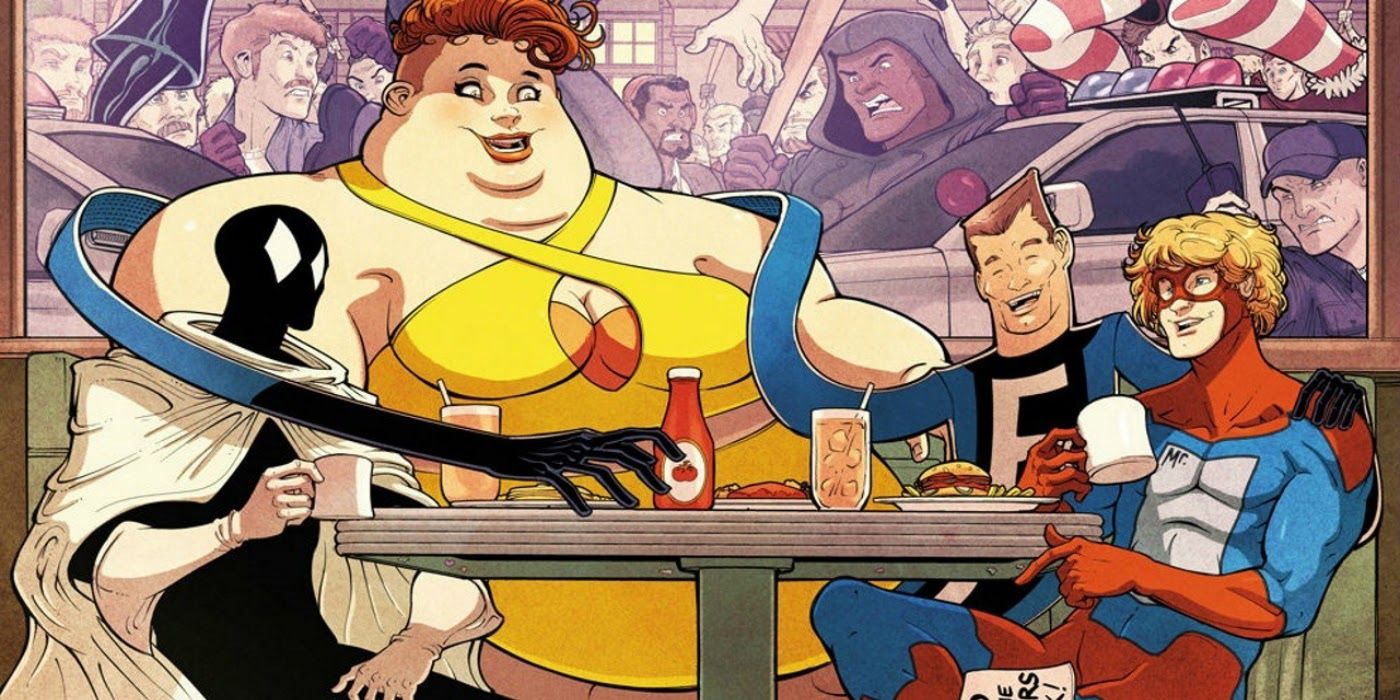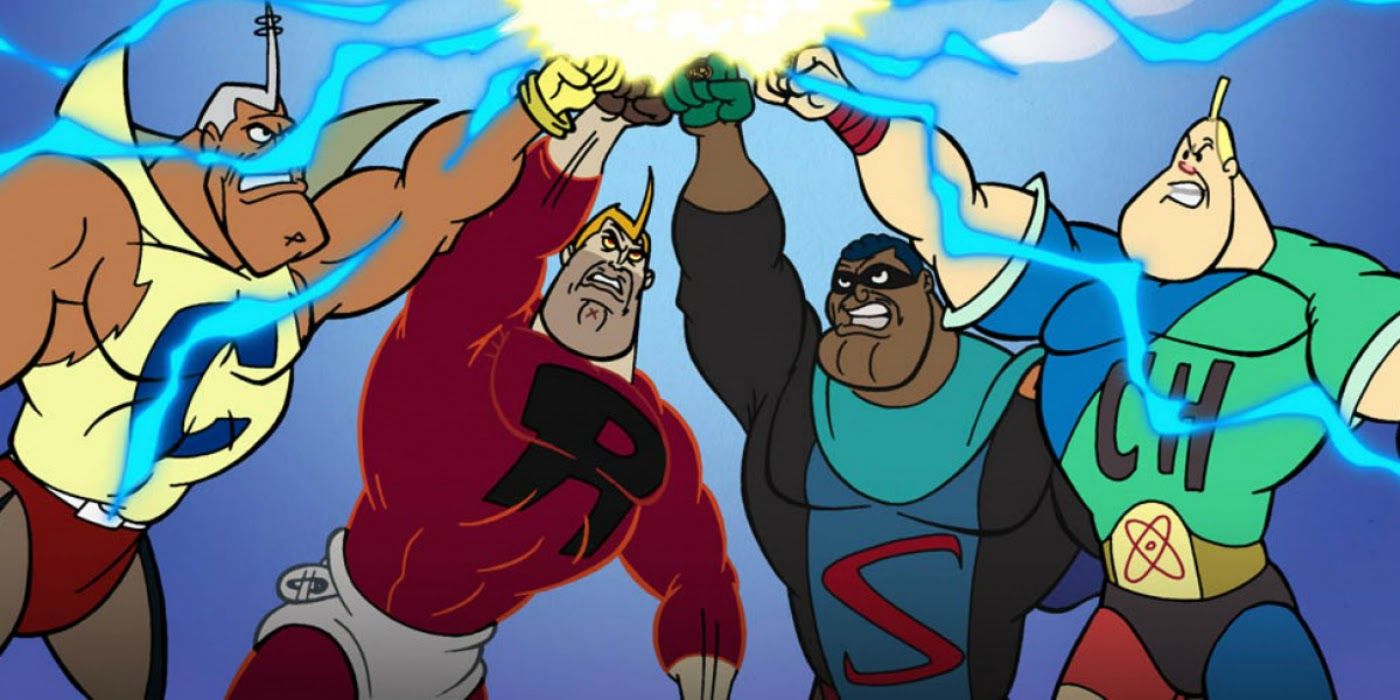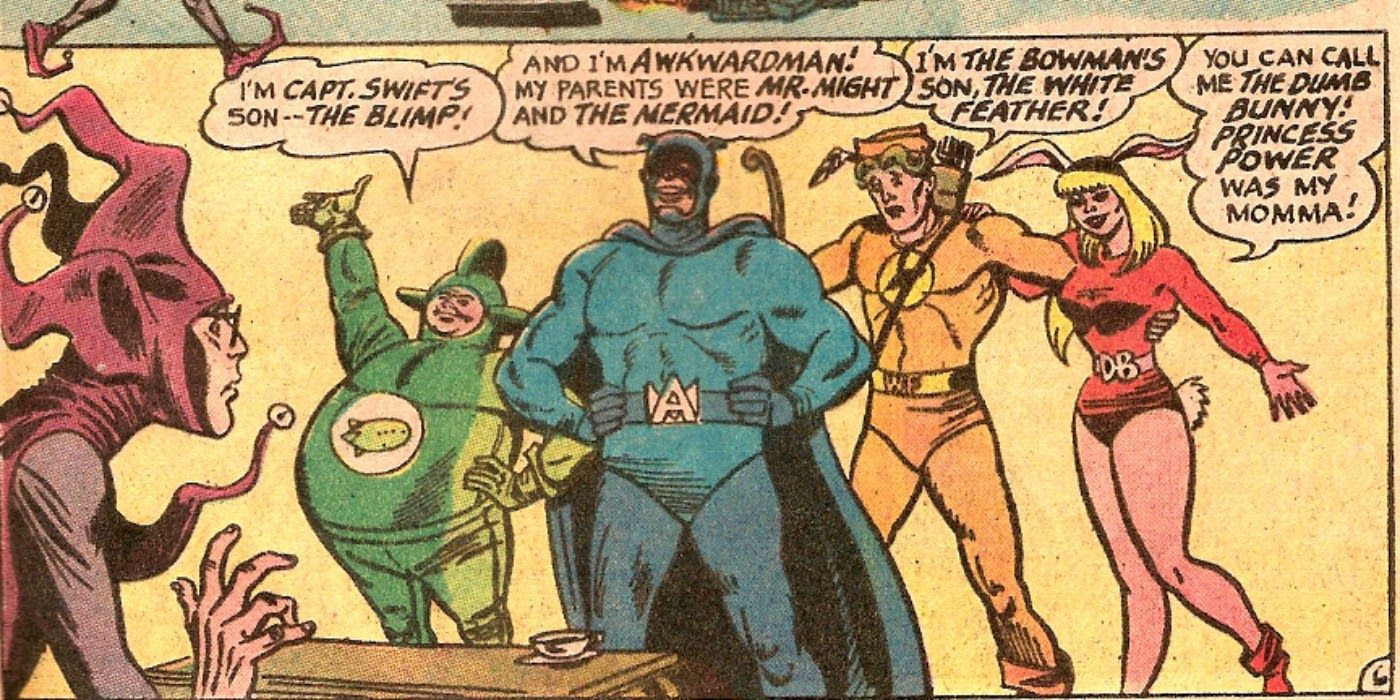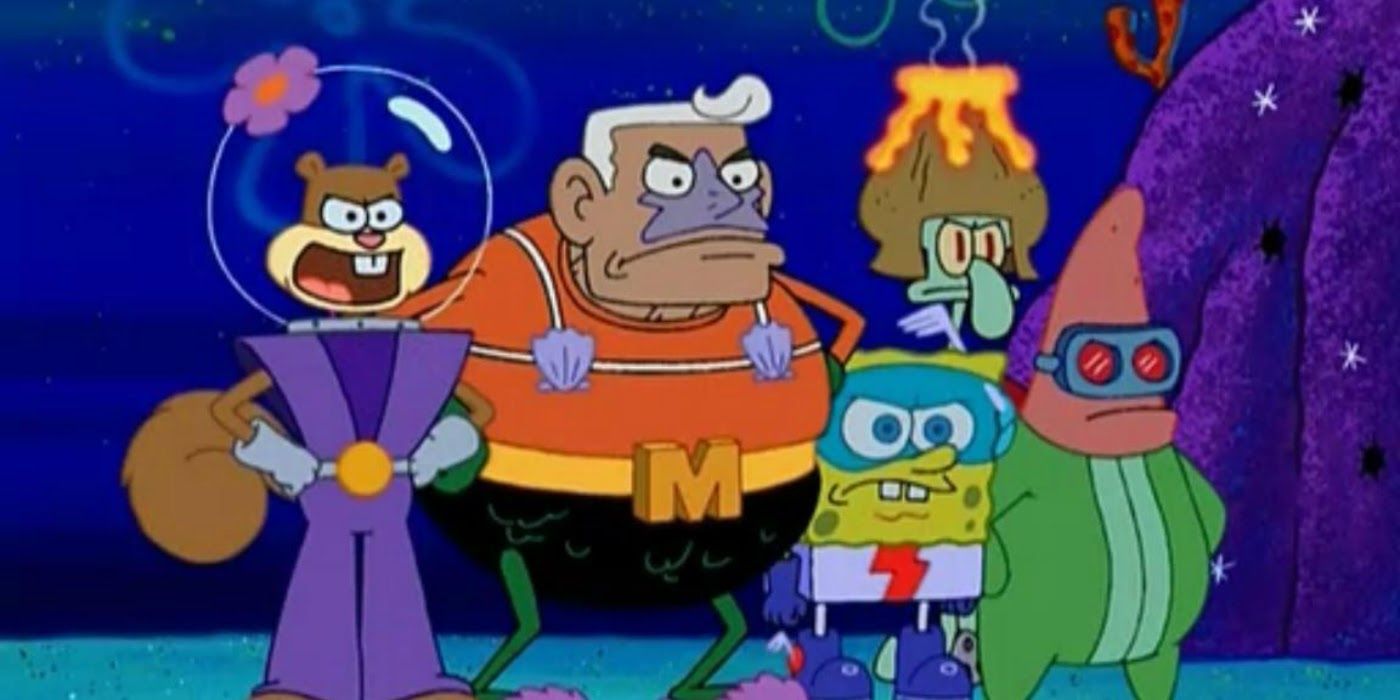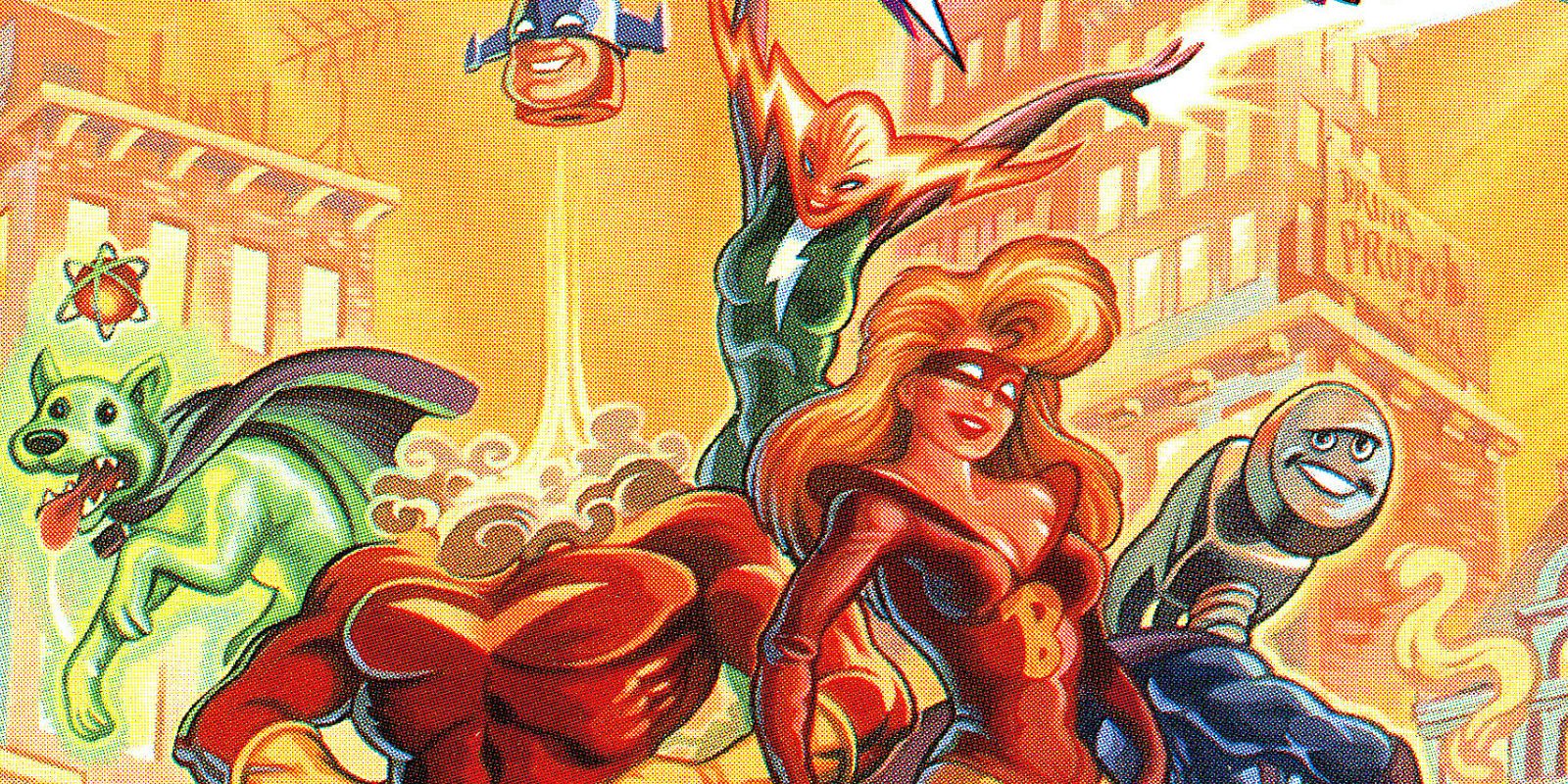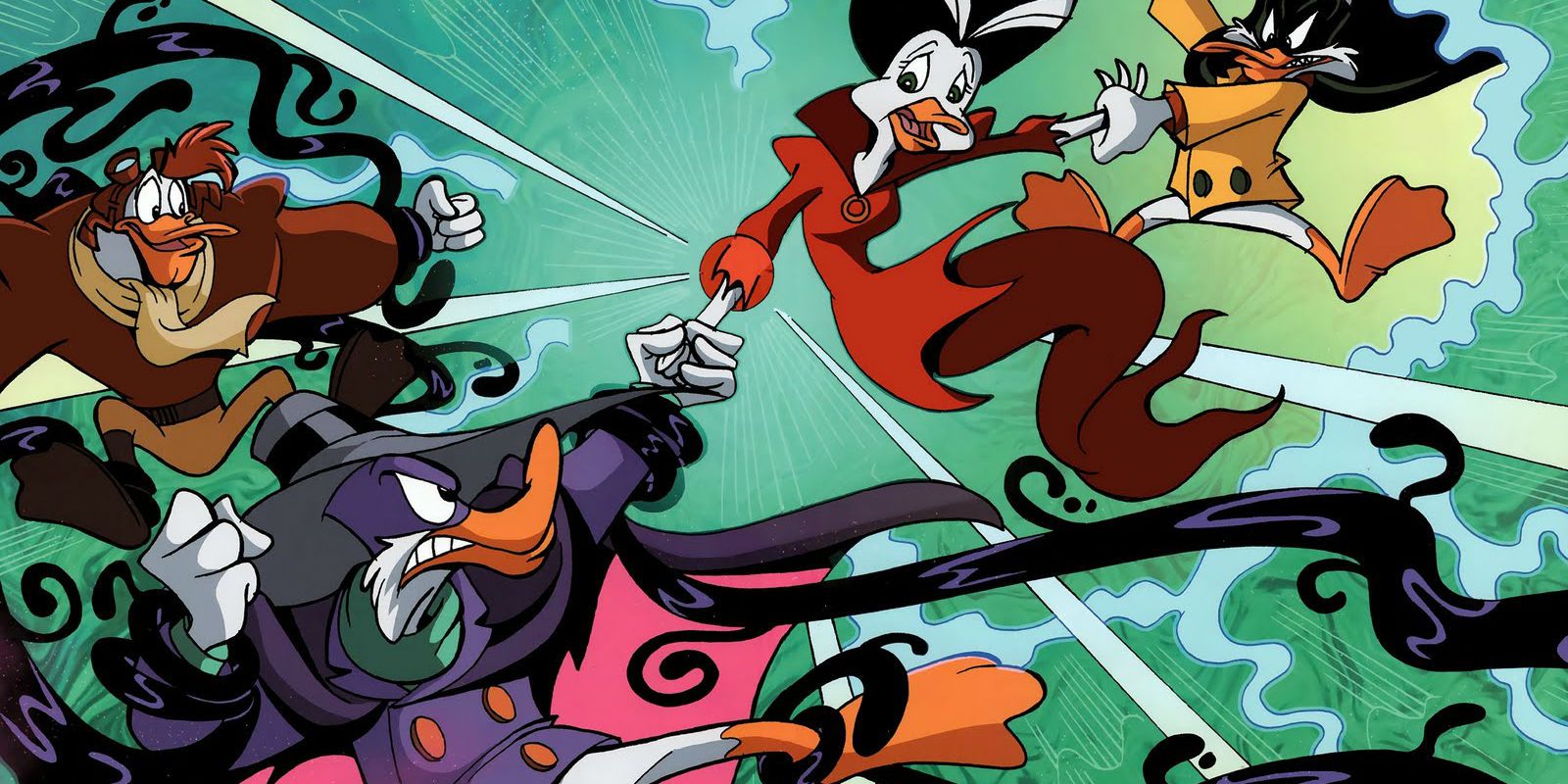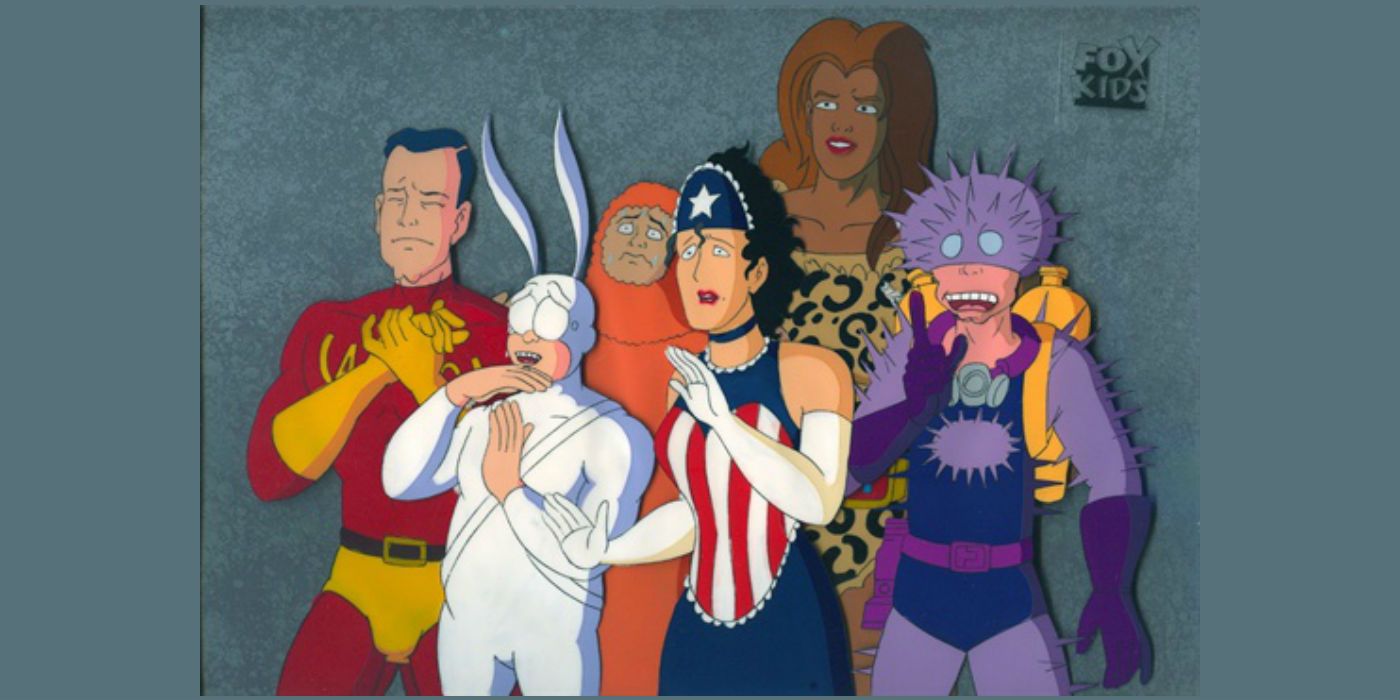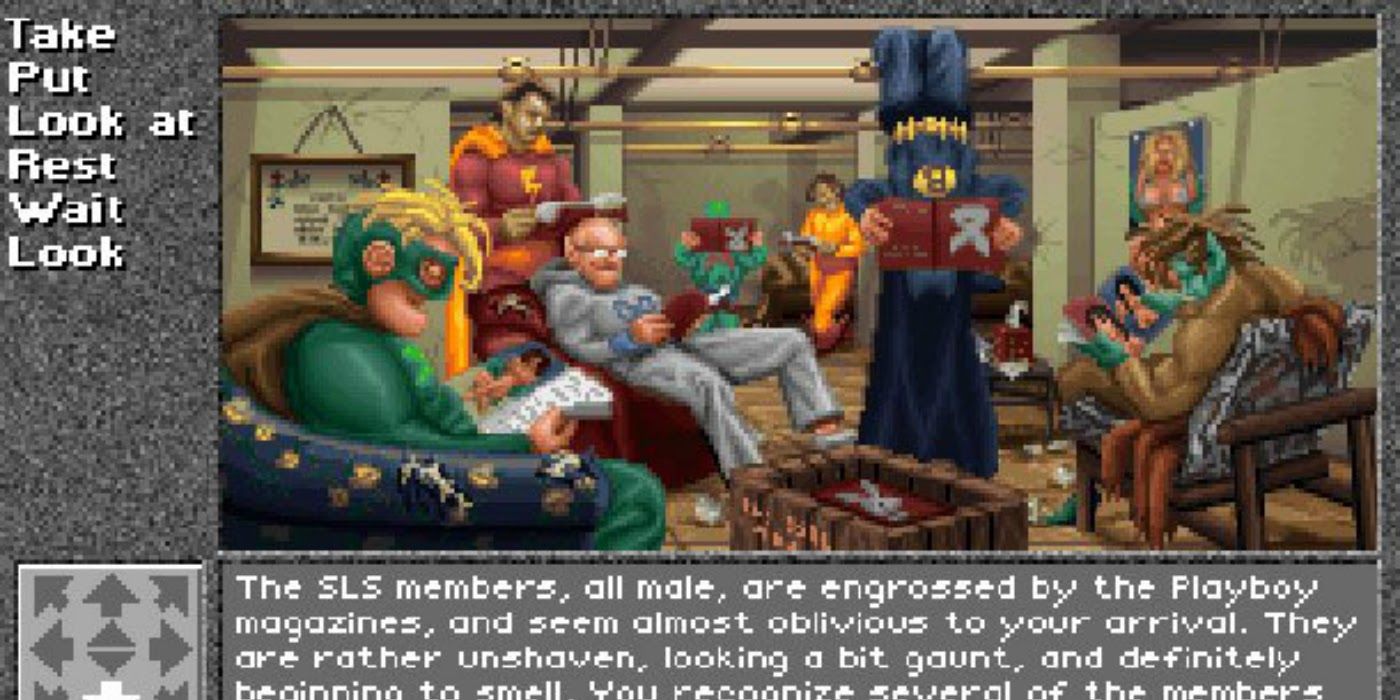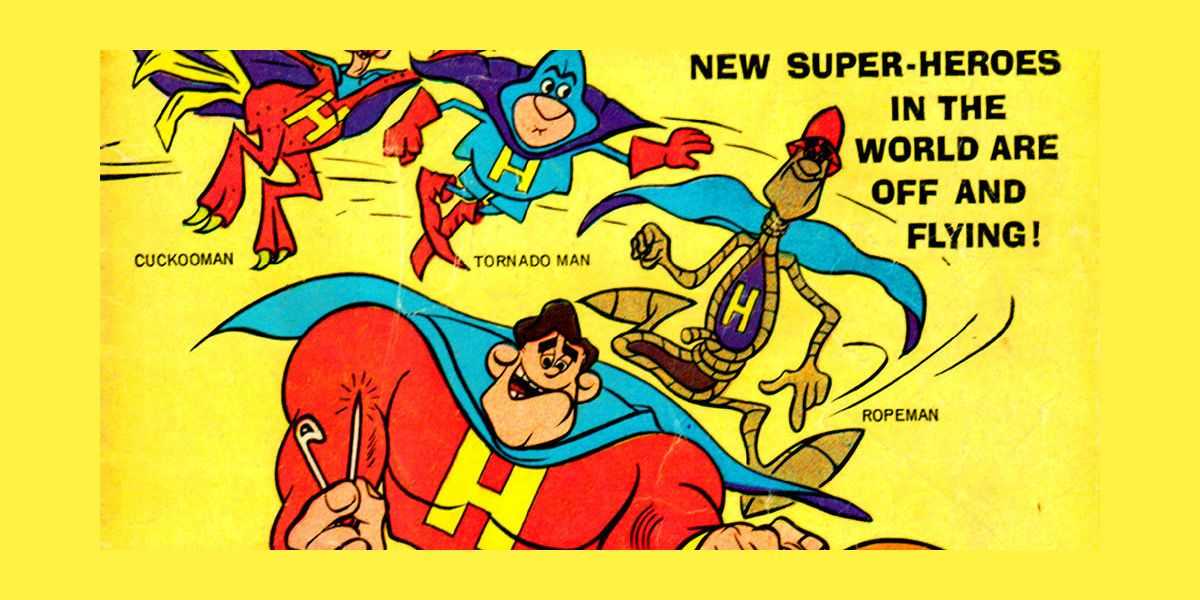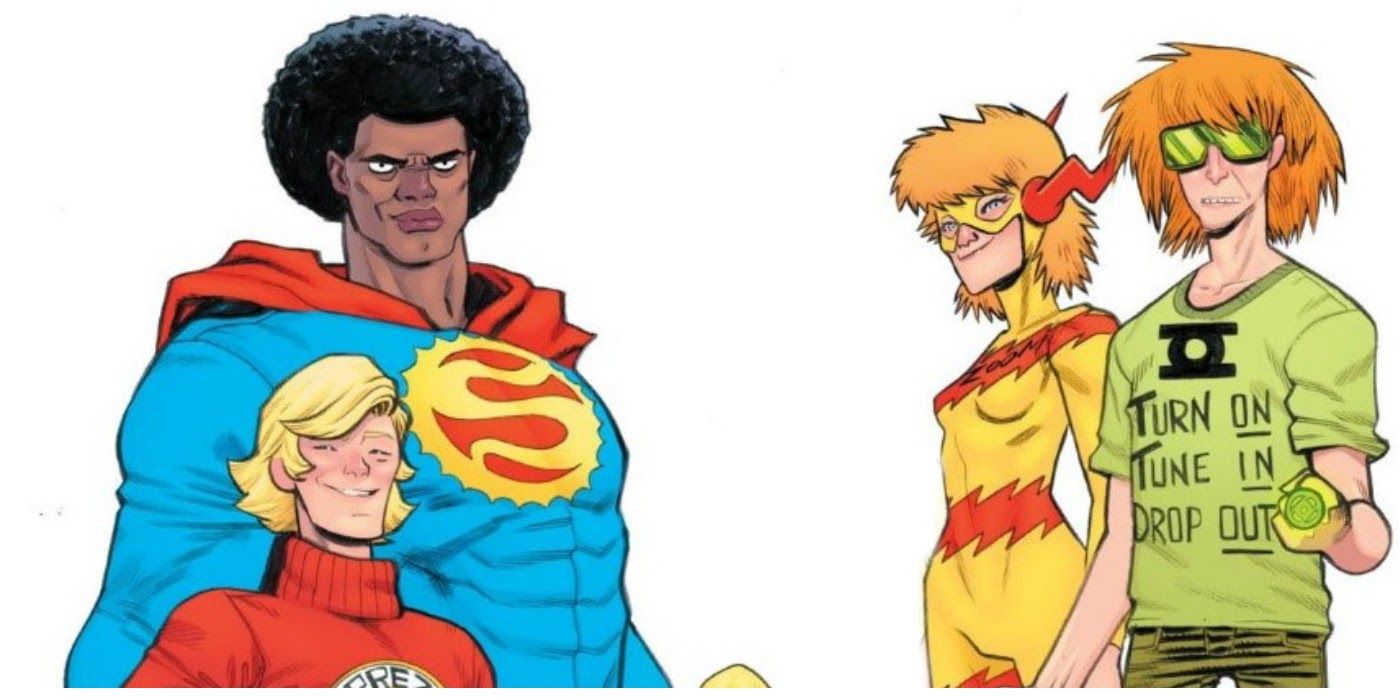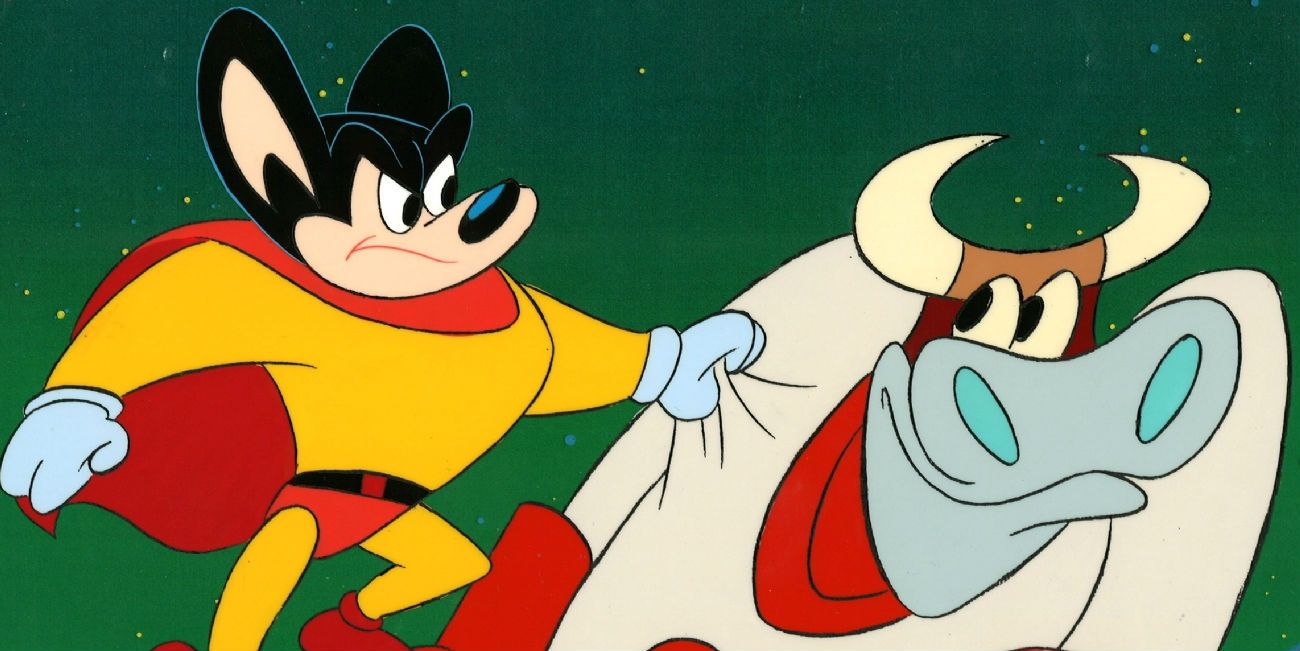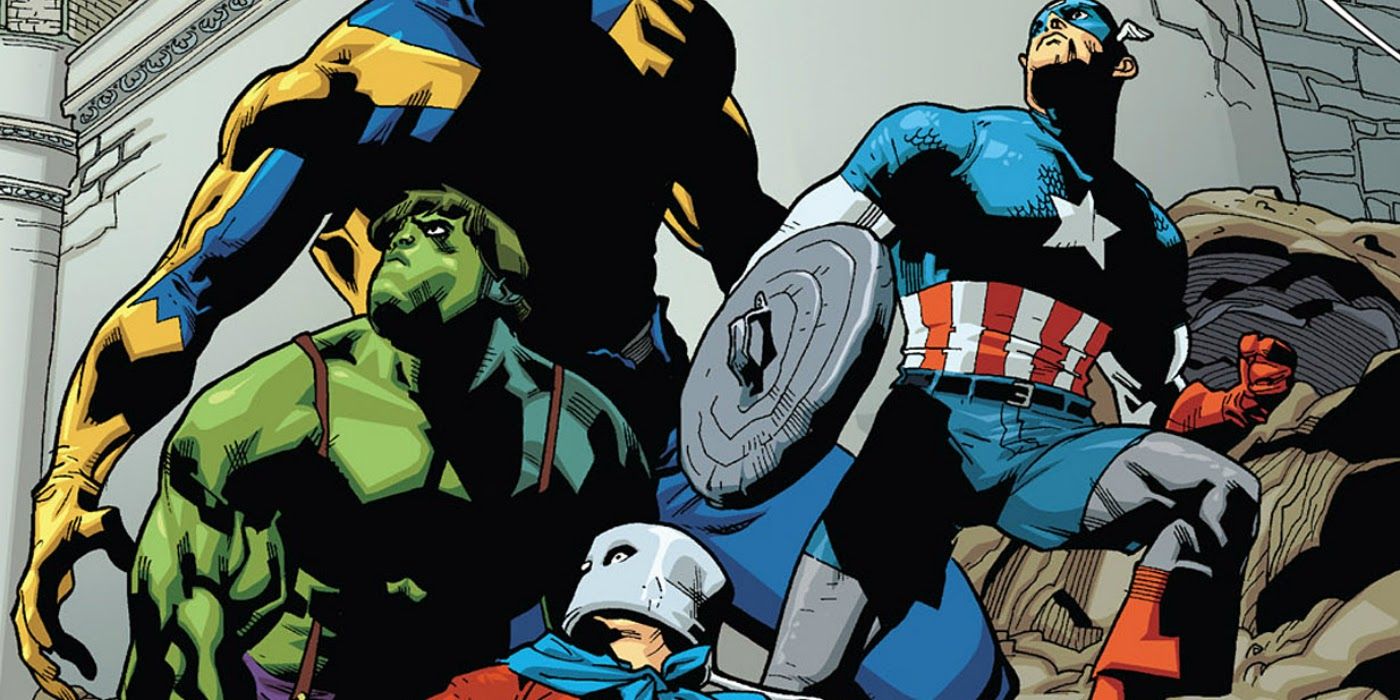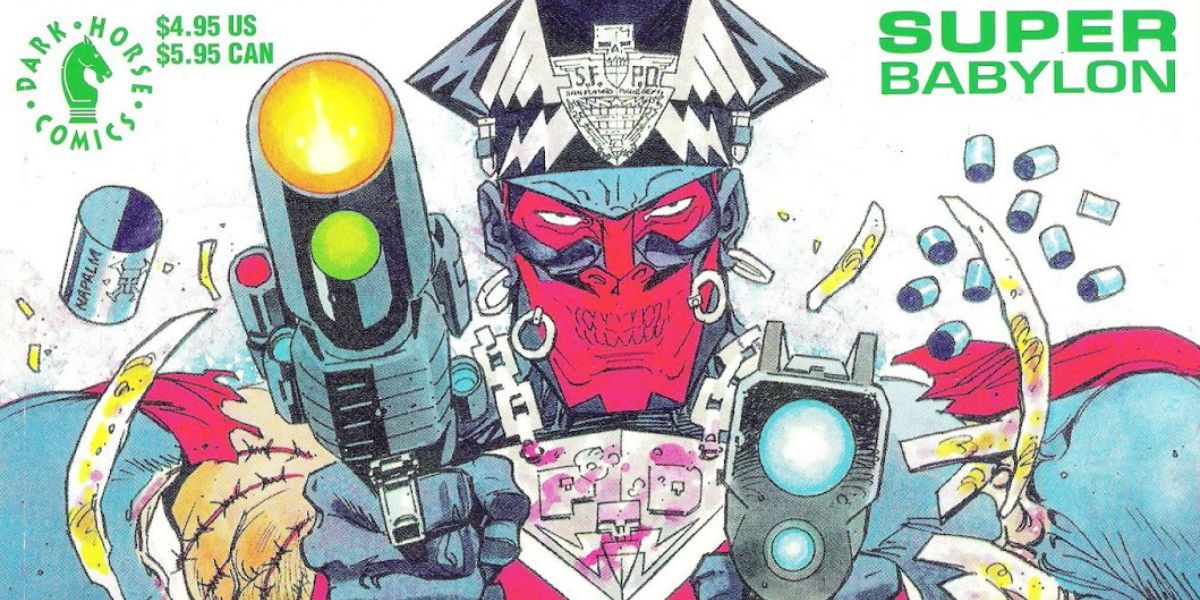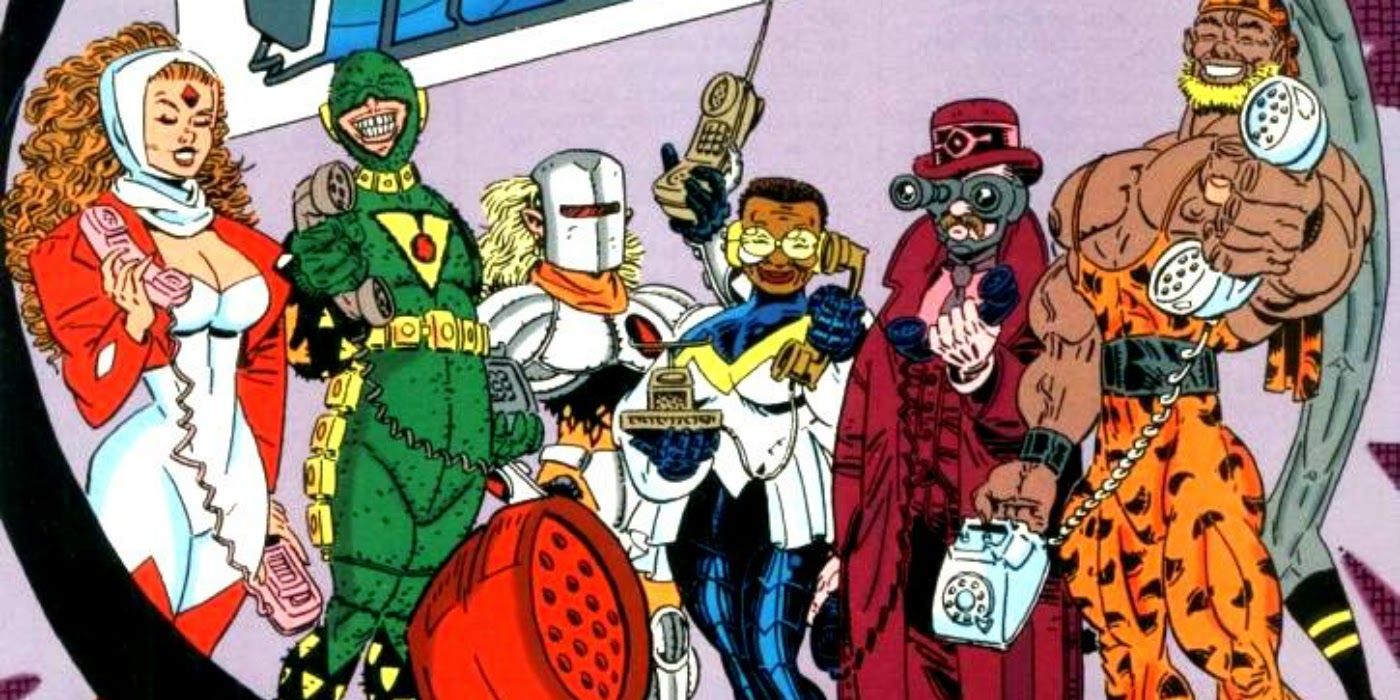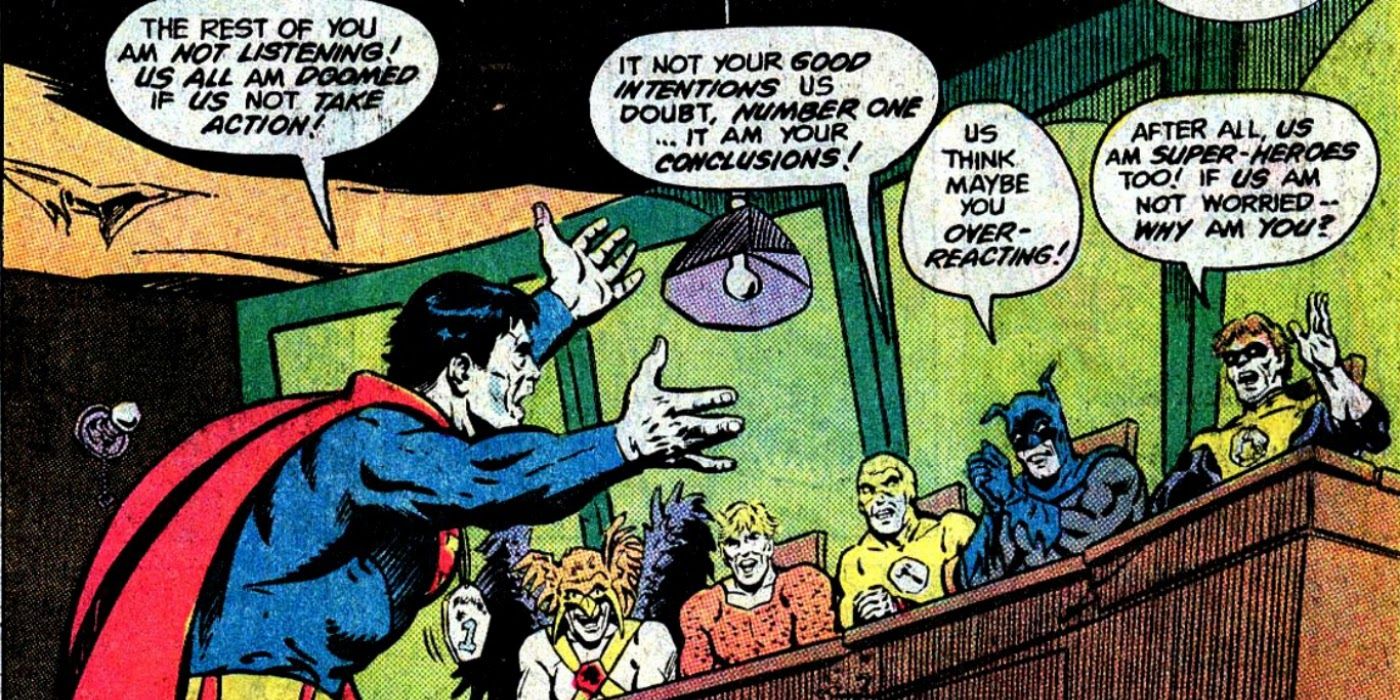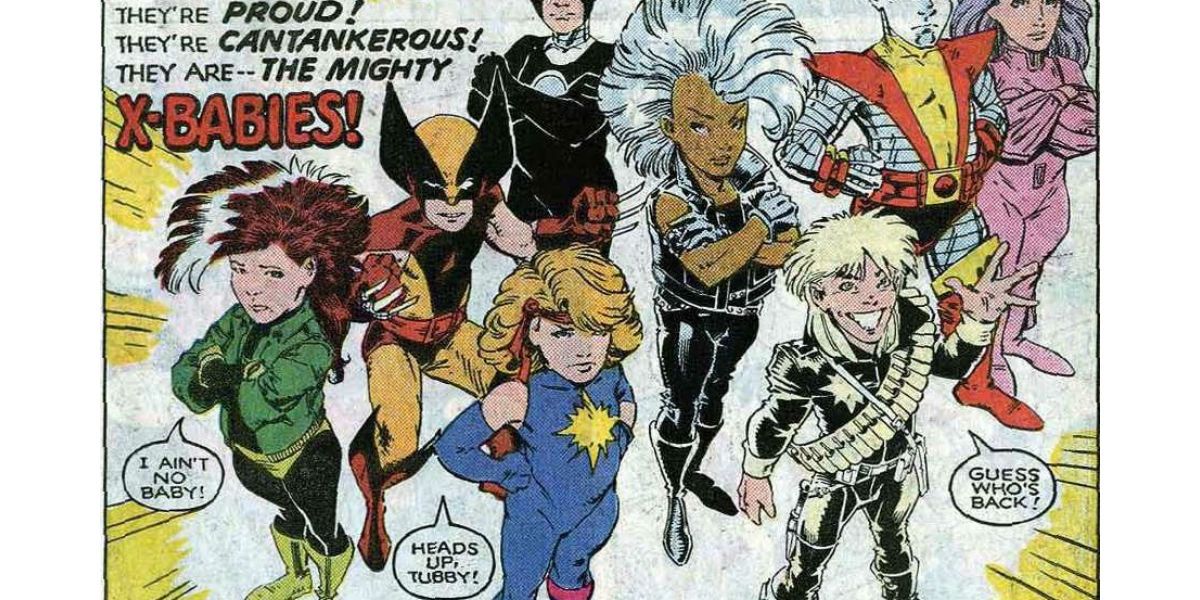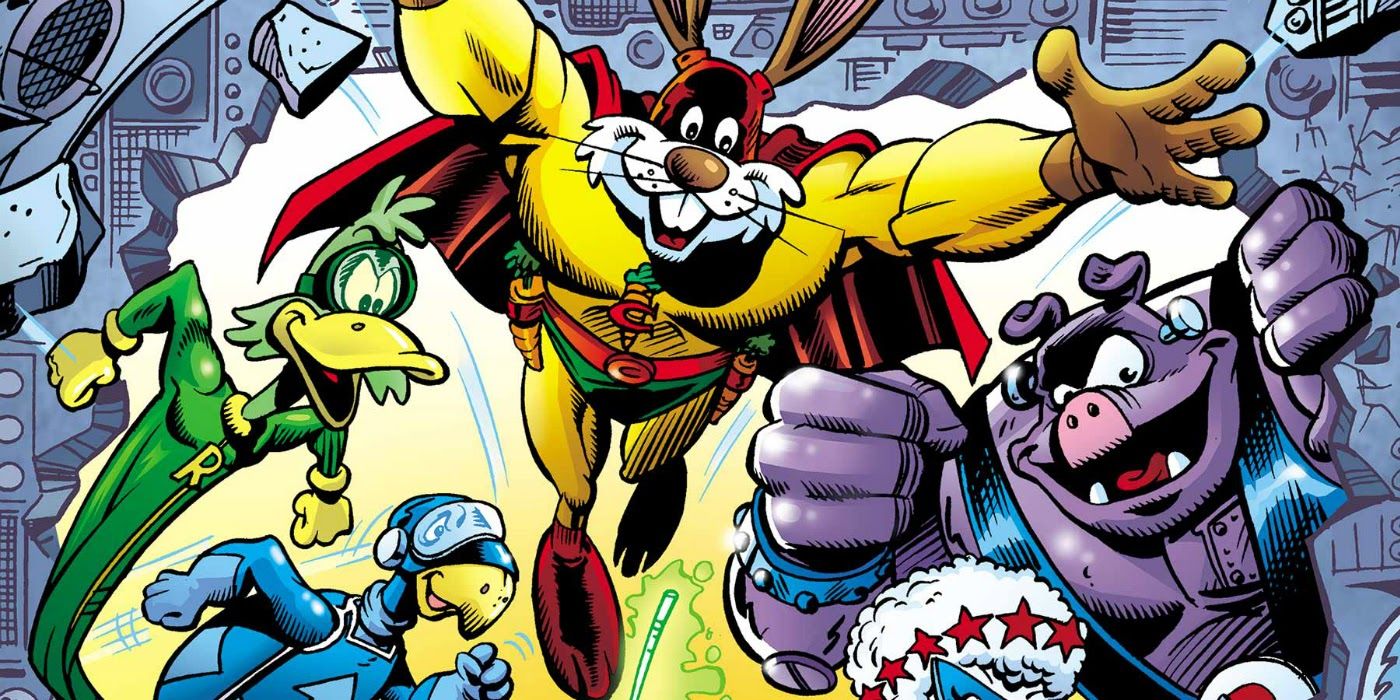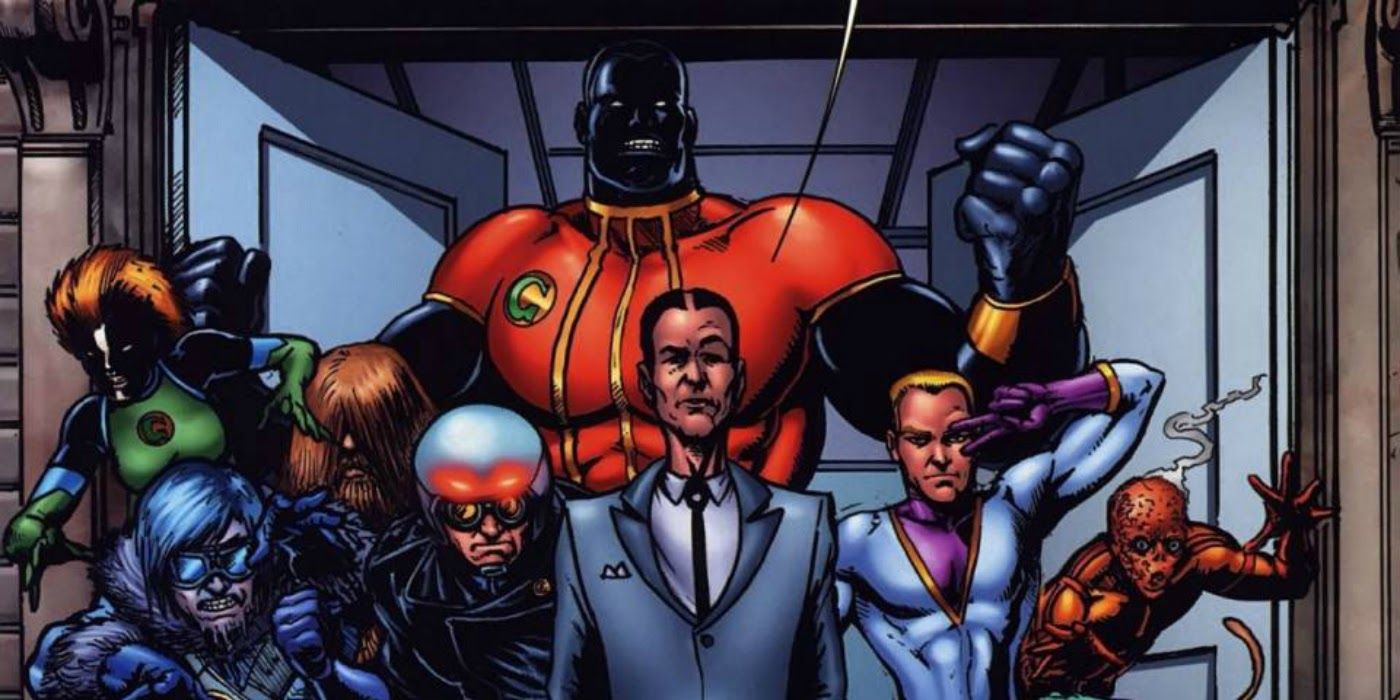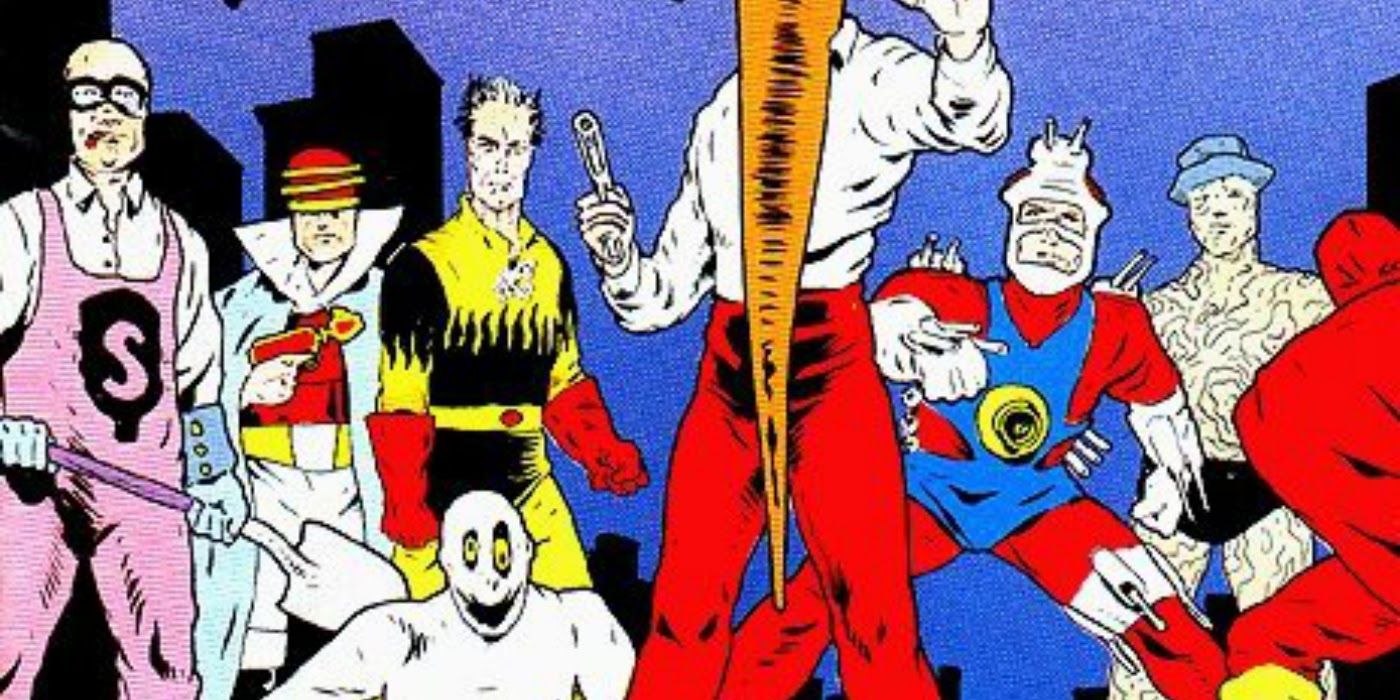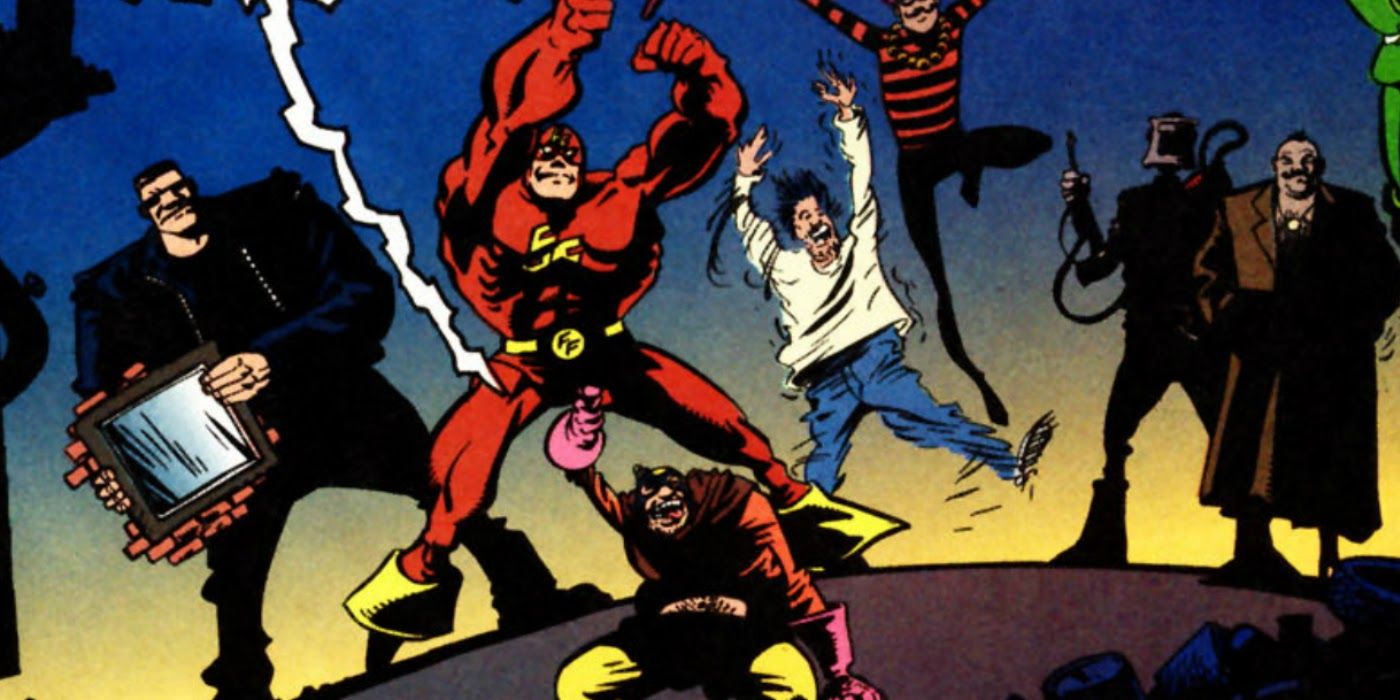Everything gets made fun of, and comic books are no exception. For as long as there have been superheroes, there have been superhero parodies. But in 1941, the first superhero team was introduced, the Justice Society of America. Quickly, there followed parodies of the concept of a superhero team. Besides specific parodies of the Justice League or the Avengers, many superhero team parodies make fun of the very concept of superheroes in general.
RELATED: 10 Things We Learned From The Cast And Crew Of DC's Powerless
One of the most popular and longest-running superhero team parodies is the Great Lakes Avengers. First created by John Byrne in 1986, the team has been a supporting part of the Marvel Universe for thirty years. For its anniversary, Marvel has brought back the GLA with a new regular series. With the launch of "Great Lakes Avengers" #1, this is a good time to look over some other great superheroes satires. Join us as CBR counts down the best superhero parody teams in history.
20 The Ripping Friends
In 1991, John Kricfalusi created the revolutionary TV show for MTV, "Ren and Stimpy." Known for its extreme violence, sexual innuendo and gross-out humor, the show was a huge hit. Unfortunately, Kricfalusi was fired in 1992 over creative differences. He moved on to create "The Ripping Friends" in 2001 for Fox. "Ripping" was about the World's Manliest Men, four brothers named Rip, Slab, Crag and Chunk. The four had superhuman strength, but not much in the way of brains. Along with their sidekick Jimmy and their mother He-Mom, the Ripping Friends fought bizarre villains such as the Indigestible Wad, a piece of sentient chewing gum absorbing moisture from people.
The show was really about mocking the overly masculine cliches and stereotypes of superhero fiction, and making fun of guys wearing their underwear on the outside of their clothes. While "Ripping Friends" wasn't as successful as "Ren and Stimpy," and only lasted for a season, it's remembered fondly by fans of Kricfalusi's outrageous humor.
19 Inferior Five
Created in 1966, the Inferior Five first appeared in DC Comics' "Showcase" #62. Unlike the Justice League, which boasts members like Superman, who could easily solve most problems on his own, the Interior Five has members with such terrible powers, they could never fight crime on their own.
The Inferior Five were sons or daughters of an earlier superhero team called the Freedom League. Led by Merryman (who looked like Woody Allen in a jester's costume), the team included Awkwardman (imbued with extreme clumsiness), the Blimp (a morbidly obese hero who could fly at extremely slow speeds), White Feather (who could shoot arrows, but only when no one was watching), and Dumb Bunny (a superstrong woman in a Playboy Bunny outfit). The series mocked the whole concept of superheroes and teams. In several issues, they met parodies of Marvel characters such as Cobweb Kid (who mocked Spider-Man) and the Kookie Four (satirizing the Fantastic Four). The Inferior Five was one of the first superhero team parodies, but hardly the last.
18 The International Justice League of Super Acquaintances
If you haven't seen the TV show "Spongebob Squarepants," you're one of the few. The story of a sponge living in a pineapple under the sea has been around since 1999, with the titular character engaged in hilarious and surreal adventures. Some of the recurring characters are the only two superheroes who live in the sea: Mermaidman and Barnacleboy. Once, they were great and powerful heroes who were sort of a cross between Batman and Aquaman, but they're in their twilight years and live in a retirement home.
In the episode "Mermaidman and Barnacleboy V," Mermaidman and Barnacleboy were forced to rebuild their old team, the International Justice League of Super-Acquaintances. The residents of Bikini Bottom are given the costumes and powers of the original team members. Spongebob became the Quickster (with superspeed), Squidward became Captain Magma (with the power to shoot lava), Sandy Cheeks became Miss Appear (who can turn invisible) and Patrick Star became the Elastic Waistband. When they got their chance to fight, the team quickly showed the shortcomings of all their powers. Long story short, Spongebob may make a great fry cook, but he's a lousy superhero.
17 Defenders of Dynatron City
Not all superhero parodies are found in the comics. There have been some parodies in video games.
It began in 1991, in the early days of what was then Lucasfilm Games. Two of the developers of the classic game "Maniac Mansion" announced their new game, "Defenders of Dynatron City," about a city where a popular soft drink called Proto-Cola caused mutations, giving superpowers to anyone who drank it. Several superheroes band together to form the Defenders of Dynatron City. These included Jet Headstrong, who could shoot his head off like a rocket; Buzzsaw Girl, whose legs were replaced by a sawblade; and Toolbox, the team's scientist, who also had a hammer for a head. There was a very retro-fifties vibe to the concept, mocking the optimism of the "atomic age."
The whole idea of "Defenders" was supposed to be a cross-platform franchise with comic books, an animated series and a toy line. There was even a pilot for the animated series released in 1991, starring Whoopi Goldberg. Unfortunately, people judged the franchise based on the Nintendo game, which was objectively terrible. It could have been a great satire of superheroes and comic books, but "Defenders" just turned out to be a footnote in an otherwise successful game company.
16 The Justice Ducks
The 1991 TV show "Darkwing Duck" was a parody of the dark and menacing heroes of the era, like the Punisher and Batman. There was also a bit of the pulp hero, the Shadow. Drake Mallard was a millionaire playboy who masqueraded as Darkwing Duck, the "terror that flaps in the night." Along with his sidekick, Launchpad McQuack, Darkwing fought crime in the funny animal city of St. Canard. It was one of many reasons for '90s kids to run home after school.
In a two-part episode "Just Us Justice Ducks," Darkwing had to face a group of his enemies calling themselves the Fearsome Five. In response, Darkwing teamed up with four other superheroes: the Iron Man-like Gizmoduck, mystic sorceress Morgana Macawber, a duck turned into a stegosaurus named Stegmutt and a mutated humanoid fish named Neptunia. The five joined together to form the Justice Ducks, a team of superpowered ducks.
Obviously, the team satirized other superhero teams such as the Justice League of America and the Avengers... only better, because they're birds.
15 The Civic-Minded Five
First published in 1986, "The Tick" is a long-running superhero parody about a gigantic blue hero named the Tick. He had super-strength, was "nigh-invulnerable" and antenna. With his accountant-sidekick Arthur, the Tick fought bizarre supervillains like Chairface Chippendale and the Soviet superman, Red Scare. His adventures in The City satirized the superhero genre, from an overabundance of ninjas to the awkwardness of capes.
Some of the superheroes in the City teamed up to form the Civic-Minded Five. First appearing in "The Tick" #9 (1991), they all had bizarre powers and appearances. Radio King could form solid objects with sound (a parody of the Marvel villain Klaw); Oddman was... well, odd; Mr. Envelope had a gun that could fire gigantic envelopes to trap criminals in; Feral Boy is a savage kid in a loincloth; and Fernslinger was made by Radio King as his sidekick, and you can probably imagine his shtick from his name. The five banded together around their ridiculous powers and thirst for justice, but were easy prey for the Chainsaw Vigilante.
14 Superhero League of Hoboken
In 1994, Steve Meretzky (designer of the bestselling PC game, "The Hitchhiker's Guide to the Galaxy") released "The Superhero League of Hoboken" for Windows DOS. The game was an extended parody of superheroes, where you had to turn one of the most ineffective teams in history into real heroes. Set in a post-apocalyptic future ruined by nuclear war, and pollution from fast food and abandoned Nintendo cartridges, humanity had mutated with some developing superpowers. In the new Tri-State area, there rose a team of superheroes called the Superhero League of Hoboken.
The actual game was a combination of an adventure and RPG game, allowing you to choose from a variety of heroes, all with pretty much useless powers. For example, you controlled the League's leader, the Crimson Tape, who had the power to create organizational charts. With him was a variety of other heroes, like the Iron Tummy, who could eat spicy foods and Mademoiselle Pepperoni, who could see through pizza boxes. Together, the Superhero League tried to raise its reputation enough to fight the evil Doctor Entropy, who plotted to destroy what's left of civilization. The game's ridiculous story and goofy characters mocked both superheroes and post-apocalyptic fiction like "Mad Max."
13 The Mighty Heroes
In 1966, the animated cartoon "The Mighty Heroes" aired on CBS. The show, created by Ralph Bakshi, was about a group of bumbling superheroes who would try to defend the city of Good Haven. When trouble struck, the city would set off fireworks, which worked like Batman's Bat-Signal. The superheroes all had names that described them almost too well. It was led by Diaper Man, a talking, flying baby who used his bottle to shoot enemies with formula. Strong Man was... well, really strong, Rope Man was actually made of rope, Tornado Man could spin around and Cuckoo Man could fly, which all the heroes could do, so this wasn't especially special.
More often than not, the Mighty Heroes would spend more time getting in each other's way and hurting each other than fighting villains. Combined with the goofy villains like the Monsterizer, who turned people into monsters, and you had a team of superheroes that were definitely flops. The show only lasted one season, but "Mighty Heroes" was heavily syndicated well into the '70s, gathering fans of all ages. Bakshi even brought the Mighty Heroes back in his 1987 "Mighty Mouse: The New Adventures" series, where they had retired to form the accounting firm Man, Man, Man, Man and Man.
12 Love Syndicate of Dreamworld
Grant Morrison's run on "Animal Man" was bold and surreal, but it hit new heights in 1990. In 1985, DC's "Crisis on Infinite Earths" brought an end to the multiverse that included different versions of comic continuity. But in 1990's "Animal Man," the supervillain Psycho-Pirate became the gateway for characters who had been forgotten or killed returning to the existing universe. One trio of characters who appeared were Sunshine Superman, Speed Freak and Magic Lantern, calling themselves the Love Syndicate of Dreamworld.
Sunshine Superman was pretty much a black Superman with a huge afro, Speed Freak was a female version of the Flash and Magic Lantern was Green Lantern if he was a hippie, wearing a T-shirt that read "Turn On, Tune In, Drop Out." The Love Syndicate claimed to be from a comic in the '60s, but they were entirely an invention by Morrison. Not only did they make fun of superheroes, but the characters were a parody of the a specific era, imagining superheroes created based on stereotypes. Given their dated style, they kind of deserved to disappear.
11 The League of Super-Rodents
In 1987, Ralph Bakshi brought back the classic superhero Mighty Mouse in "Mighty Mouse: The New Adventures." The whole series took an irreverent look at superheroes, but this episode stood out as a great parody of super-teams when there are animals involved. Wouldn't animals of a certain species band together? The League of Super-Rodents sure did!
In one episode of "The League of Super-Rodents," the supervillain known as The Cow is goaded into attacking Mighty Mouse's team. As you might expect, it is full of different types of rodents, all with weird powers. There's Mole Mom, who burrows under the ground and shoots her babies at people like missile; GI Gerbil and His Howling Groundhogs; and of course, the Rampaging Sloth, who throws a punch so slowly that he seems to be a statue. It's all ridiculous, but the episode manages to fit practically every rodent in the animal kingdom into its short running time. And that's got to count for something!
10 The New Paramounts
In 1967, Marvel published "Not Brand Echh," a parody series that made fun of its own characters and those over at DC; sort of like "MAD Magazine" for comics. Stories included the Inedible Bulk, Giant-Sam (instead of Giant-Man) and Charlie America (mocking Captain America). Their mascot was Forbush Man, a powerless superhero version of Irving Forbush, a fictional employee of Marvel.
"Nextwave: Agents of H.A.T.E." was a comedy series in 2006 about a team from an anti-terrorist organization that went rogue after discovering it was actually funded by a terrorist organization called the Beyond Corporation.
In "Nextwave" #9 (2006), the Beyond Corporation found a stack of "Not Brand Echh" comics, and decided to bring the heroes to life. Nextwave fought real-life versions of the Bulk, Charlie America and Giant-Sam. The fight that followed was way too brief, with Bulk and Charlie America being beaten quickly, and Giant-Sam more concerned with keeping anyone from getting hurt than fighting. But just when it seemed like it was all over, Forbush Man revealed his power, which was to put all the members of Nextwave into horrific alternate realities. He turned out to be the most powerful superhero of all, even with a saucepan on his head.
9 The Jesus Society of America
The 1986 series "Marshal Law" was itself a vicious parody of the superhero genre, but it also touched on superhero teams as well. Set in a near future where government experiments were used to create super-powered soldiers, superheroes began running amok in an earthquake-devastated San Futuro. In response to the mayhem caused by rampant heroism, super-powered "cape hunter" Marshal Law pursued and arrested rogue superheroes.
In the 1992 mini-series "Super Babylon," Marshal Law is forced to battle the Jesus Society of America, an idolized group of WWII-era superheroes who were brought back to life as zombies. In the issue, the Society is revealed as a group of sociopaths whose private behavior caused most of them to commit suicide when exposed. Marshal Law brutally killed them again, all while giving a speech about their cowardice and hypocrisy.
The whole concept is a satire of the Golden Age, where superheroes were portrayed as being part of the victory of World War II. The Public Spirit and Private Dick -- gay lovers who cryogenically freeze themselves to be together forever -- were particularly blunt satires of Captain America and Bucky. Their revival is also a critique of the trend towards bringing dead heroes back to life. We're looking at you, Barry Allen.
8 Hero Hotline
Not all superheroes are driven by a need for justice. Some of them are just in it for the money. That's the idea behind Hero Hotline.
First introduced as a backup story in "Action Comics Weekly" #637 (1989), Hero Hotline is a company allowing anyone to call for help. Most of the heroes working for the company have rather weak powers; like Stretch, whose body is so elastic that he can't stay normal and Private Eyes, who wears goggles that give him microscopic and infrared vision. Hero Hotline eventually got its own series the same year.
The "Hero Hotline" series is about superheroes who handle things beyond the ability of the police and fire department, but not important enough for regular superheroes. They spent a lot of time getting cats out of trees. Besides the usual gags about their poor superpowers, the comic also made fun of the working world. Everyone has to make a living, after all, including superheroes. Their popularity continues to be felt in the DC Universe today. In "Teen Titans Annual" #1 (2006), Hero Hotline is mentioned as being involved in Infinite Crisis.
7 The Bizarro League
One of Superman's oldest enemies is Bizarro, an exact opposite clone of Superman. While Superman is a genius, Bizarro is stupid. While Superman is athletic, Bizarro is clumsy. Instead of heat-vision and ice breath, Bizarro has cold-vision and heat breath. Even the Superman logo on his chest is backwards. But why stop at Superman? DC also introduced an entire team of Bizarro superheroes based on the Justice League, known as the Bizarro League.
The Bizarro League first began in "World's Finest" #156 in 1966, when Bizarro created a Bizarro Batman. Later comics introduced a Bizarro Flash and all the other members of the League until the first formal appearance of the Bizarro League in "Superman" #379 in 1983. On his world, everyone has their counterparts, including a Bizarro Batman, Bizarro Wonder Woman and a Bizarro Flash.
All the Bizarro League members are crazy reversals of the originals. Bizarro Aquaman can't swim. Bizarro Batman (later called Batzarro) is the world's worst detective and wears a "useless" belt full of junk. Bizarro Wonder Woman (later called Bizarra) has a magic lasso that forces people to tell only lies. The Bizarro League is always asking how they can be the exact opposite? And the answer is always funny.
6 X-Babies
In the 1980s, there was a trend toward making younger versions of popular characters for TV. The trend started with "Muppet Babies," but continued with shows like "The Flintstone Kids." The supervillain Mojo, who created the X-Babies, has always been a satire of network television executives, and the X-Babies were apparently a gag mocking the "baby version" trend.
The supervillain Mojo is an alien dictator who rules the Mojoverse, an alternate dimension where everyone is addicted to brutal gladiatorial TV shows. He's always had a special interest in the X-Men, because their appearances on his shows drive high ratings. After the "Fall of the Mutants" crossover event in 1988, the X-Men were thought to be killed in Dallas, Texas. In a backup story in "Uncanny X-Men Annual" #12, Mojo became frustrated at the thought of losing his best rating generators, and ordered his scientists to create a new version of the X-Men. After creating different versions like female and animal X-Men, the X-Babies were created. They would soon escape to wreak havoc against Mojo, and have returned in later issues over the years. The X-Babies are a perfect satire of the desire for high sales, because everybody loves babies... right Skottie Young?
5 Captain Carrot and The Amazing Zoo Crew
The Zoo Crew first came to life in an inset in "New Teen Titans" #16 in 1982. The team got its own short-lived series that lasted only one year, ending in 1983. But the comic is still fondly remembered for its cartoon background and comedy.
One of the best things about "Captain Carrot" is that's it's actually in DC canon. Set in an alternate universe where anthropomorphic animals exist, the team was formed when Superman accidentally crashed a meteor into the funny animal universe, giving several animals powers. Led by the superstrong, flying rabbit known as Captain Carrot (basically Bugs Bunny as a superhero), the team included Fastback (a super-fast turtle), Pig Iron (a super-strong metal pig), Yankee Poodle (who could shoot energy beams of stars and stripes), Rubberduck (a super-stretchy duck), and Alley-Kat-Abra with magical powers. Together, they made a lot of animal puns and fought crime in a cross between Looney Tunes and the Justice League.
In 2007, the team returned in a "Countdown to Final Crisis" story called "Captain Carrot and the Final Ark." The story was a parody of the dark and gritty tone of modern comics, with several of the original characters having died or retired.
4 The G-Men
"The Boys," first published in 2008, was a long-running series that served as a brutal satire of the superhero genre. It went so far that it had to switch publishers after the sixth issue, because DC was uncomfortable with the violent anti-superhero tone.
In the world of the Boys, superheroes exist and are world famous celebrities. Many of them have been corrupted by their status, leading them to engage in ruthless and reckless behavior. In response, the government assembled a Black Ops CIA squad nicknamed "The Boys," who are charged with monitoring and policing the superhero community.
One team that the Boys came into conflict with was the G-Men, a scathing parody of the X-Men. Their exploits bring billions of dollars in merchandising and led to popular spin-off groups. But the Boys discover the G-Men were abducted as children, and injected with Compound V, the drug that gives them superpowers. Their leader Godolkin, who's very similar to Charles Xavier, but abusive in every sense of the word.
Needless to say, the whole storyline is a commentary on exploitation and fame, as well as the commercialization of superheroes like the X-Men. Everything from the excessive merchandising to the endless spin-off groups is given a roasting.
3 Mysterymen
The Mysterymen began as a side joke in "Flaming Carrot Comics." First appearing in his own series in 1981, Flaming Carrot was a parody about a superhero driven insane by reading too many comic books. The Mysterymen were introduced in a flashback in "Flaming Carrot Comics" #16 as his superhero team. The idea behind them was that they were the team for heroes who couldn't get in anywhere else. Basically, all you needed to become a Mysteryman was a costume and a name. There were supposed to be 30 of them (nicknamed the "Dirty 30"), but that number fluctuated because the Minutemen kept dying. In fact, the Mysterymen are distinguished by their extremely high body count. Some notable members included the Strangler, Spleen, Hummer and Masked Marauder.
The Mysterymen did crossovers with the Teenage Mutant Ninja Turtles twice, and appeared in their own series, "Bob Burden's Original Mysterymen" in 1999. The comic is known more for its movie adaptation in 1999. In the movie, Ben Stiller played Mr. Furious, leading a team of mediocre superheroes against the mad scientist Casanova Frankenstein. It packed a lot of satire about heroes and powers, years ahead of the superhero movie craze.
2 Section 8
In the DC Universe, there are many arguments about which team is the best. There's the Justice League, the Teen Titans, or maybe you favor Suicide Squad. But there's no doubt about the worst: Section 8.
Section 8 first appeared in "Hitman" #18 in 1997. Section 8 means "mentally unfit for duty," and that's a good description of the team. Based in the Irish section of Gotham City known as the Cauldron, Section 8 is made up of some of the most bizarre superheroes in the history of comics. There's Sixpack, a perpetually drunk hero with an enormous gut who attacks with broken bottles; Defenestrator, who carries around a window to throw criminals through; Jean de Baton-Baton, who fights crime with the "power of Frenchness" (typically hitting people with baguettes or onions); Bueno Excellente, a grossly overweight pervert who says nothing but "bueno;" and, of course, Dogwelder, who welds dead dogs onto people's faces.
Together, Section 8 sends up everything in superhero comics, from retired superheroes to "Death in the Family." Their encounters with real heroes like Batman and Wonder Woman are hilariously bizarre. They're not just a bad team... they're a force of nature.
1 The Great Lakes Avengers
First introduced in "West Coast Avengers" #46 in 1989, the Great Lakes Avengers are a team of superheroes with truly unusual powers. Avengers members Hawkeye and Mockingbird first approached them because they were using the name "Avengers" without permission, but later agreed to become mentors to help them become a better team.
The original founder of the Great Lakes Avengers was Mr. Immortal, whose power was returning from the dead. No, that doesn't mean he was invulnerable. He would literally be killed, and then return to life after a period of time. He's aided by Big Bertha, a former supermodel who could expand to become extremely fat and invulnerable; Flatman, who is sort of like Mister Fantastic if he was flattened out; Doorman, who could turn himself into a doorway through any surface; and Dinah Soar, a flying woman who was half-Pterosaur.
The team was kind of clumsy, but could actually handle themselves in combat. Over time, they were forced to change their names to the Great Lakes X-Men, the Great Lakes Champions and the Great Lakes Initiative, but finally went back to the Great Lakes Avengers. The best part of their history is that, unlike most of the teams on this list, the Great Lakes Avengers exist in the mainstream continuity, allowing them to work with (and make fun of) existing Marvel heroes.
Which team is your favorite superhero parody? Are there any we missed? COMMENTERS ASSEMBLE!

